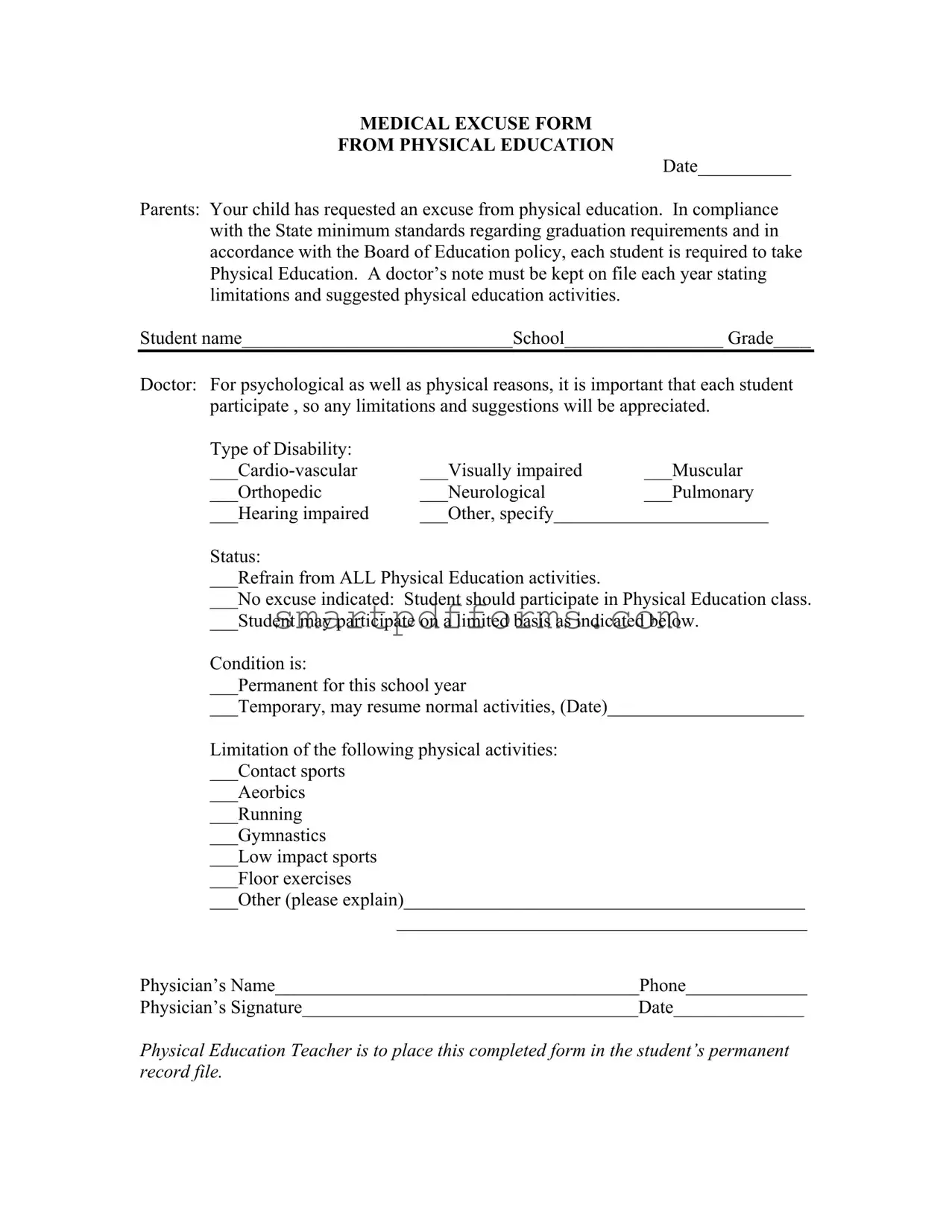MEDICAL EXCUSE FORM
FROM PHYSICAL EDUCATION
Date__________
Parents: Your child has requested an excuse from physical education. In compliance with the State minimum standards regarding graduation requirements and in accordance with the Board of Education policy, each student is required to take Physical Education. A doctor’s note must be kept on file each year stating limitations and suggested physical education activities.
Student name_____________________________School_________________ Grade____
Doctor: For psychological as well as physical reasons, it is important that each student participate , so any limitations and suggestions will be appreciated.
Type of Disability: |
|
|
___Cardio-vascular |
___Visually impaired |
___Muscular |
___Orthopedic |
___Neurological |
___Pulmonary |
___Hearing impaired |
___Other, specify_______________________ |
Status:
___Refrain from ALL Physical Education activities.
___No excuse indicated: Student should participate in Physical Education class.
___Student may participate on a limited basis as indicated below.
Condition is:
___Permanent for this school year
___Temporary, may resume normal activities, (Date)_____________________
Limitation of the following physical activities:
___Contact sports
___Aeorbics
___Running
___Gymnastics
___Low impact sports
___Floor exercises
___Other (please explain)___________________________________________
____________________________________________
Physician’s Name_______________________________________Phone_____________
Physician’s Signature____________________________________Date______________
Physical Education Teacher is to place this completed form in the student’s permanent record file.

